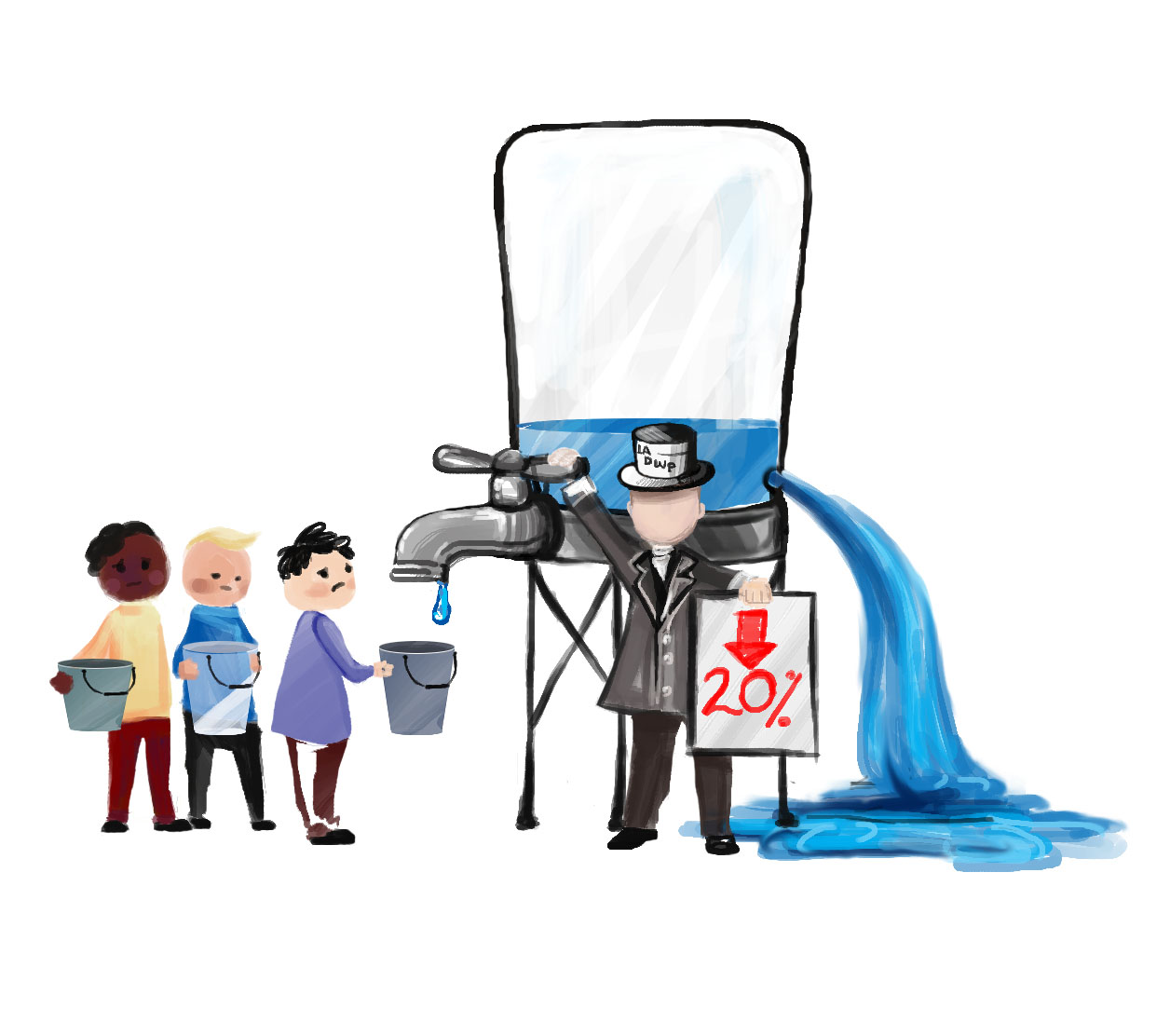Aram Ghoogasian: City must fix leaks in water conservation efforts

Victoria Chang/Daily Bruin senior staff
By Aram Ghoogasian
Oct. 21, 2014 12:33 a.m.
One of Los Angeles’ claims to fame is its year-round sunshine, but that has proved to have negative consequences.
The city government is now taking steps to combat the state’s ongoing drought. Los Angeles Mayor Eric Garcetti recently called on the city to reduce its water usage by 20 percent over the next three years, a move that aims to limit water use both by the city and its residents in a number of different ways.
The effort is going to have to come from all fronts, both from the government and its constituents. While it’s clear that L.A. residents need to take it upon themselves to reduce their water consumption, the city also needs to do a better job of checking its own mistakes when it comes to water conservation.
The Sunset Boulevard water main break, which flooded UCLA’s campus with 20 million gallons of water, brought those mistakes to the forefront. If any good came from that break, it made the city and the people living in it more cognizant of the real danger our water supply is in during this drought. And it also shed light on the city’s potential ineffectiveness at preventing waste by not maintaining Los Angeles’ water infrastructure – the pipe that burst on Sunset Boulevard was nearly 100 years old.
The break caused a massive waste of water in a spectacular fashion, but the less conspicuous and more common leaks, sometimes even as common as leaking sprinklers, add up. Leaks and main breaks, a problem UCLA students are all too well acquainted with, constitute about 10 percent of California’s water usage – billions of gallons per year.
Just because they go largely unnoticed doesn’t mean their impact isn’t as significant as a break that is plastered on our television and computer screens. The city is in no place to chastise residents over their water usage when the city itself isn’t addressing its own water waste.
Some residents have pointed out that government agencies often break the water-usage rules the agencies, like the Los Angeles Department of Water and Power, themselves impose, including refraining from running sprinklers at city parks during the middle of the day and over-watering grass. This has caused a spike in complaints about water waste against the city, which have increased well over tenfold in number since 2013. The city government needs to realize that there’s a reason so many people are upset: Local agencies aren’t doing enough to police themselves.
Still, Garcetti’s statement, although a little late, is a necessary move. He proposed institutional changes like reducing the city’s reliance on imported water alongside individual adjustments, such as decreasing the use of water for outdoor landscaping; both need to be a major part of the effort to save water. Policymakers need to make some progress in reducing consumption if the state and Los Angeles County, more specifically, are going to get through the drought.
Garcetti’s plan outlines ways to prevent wastage that don’t require a lot of money to get the job done, but there is also the looming, more expensive infrastructure problem. Major infrastructural changes aren’t likely to become a reality anytime soon. Los Angeles City Councilman Paul Koretz said replacing L.A. water pipes would cost $4 billion over the next decade, leading to an increase in water rates. But the city doesn’t need to tear its foundations up to deal with the leak problems – it just needs to make sure the pipes already in the ground aren’t at risk of rupturing.
Although major main breaks aren’t common, the one just off campus brought the city’s culpability to the forefront, and Garcetti has failed to address the waste caused by major and minor leaks alike. He’s called some of the city’s problems out but left out other problems worth addressing. Given that the city’s aim is to reduce water usage by 20 percent over a mere three years, addressing the pipe leakages, which make up 10 percent of the state’s water use, is a small, but substantial move to sustain the supply.
Garcetti took a step in the right direction, but it’ll take a sustained effort to ensure our water supply lasts until the mayor’s self-imposed finish line of 2017, and beyond.


